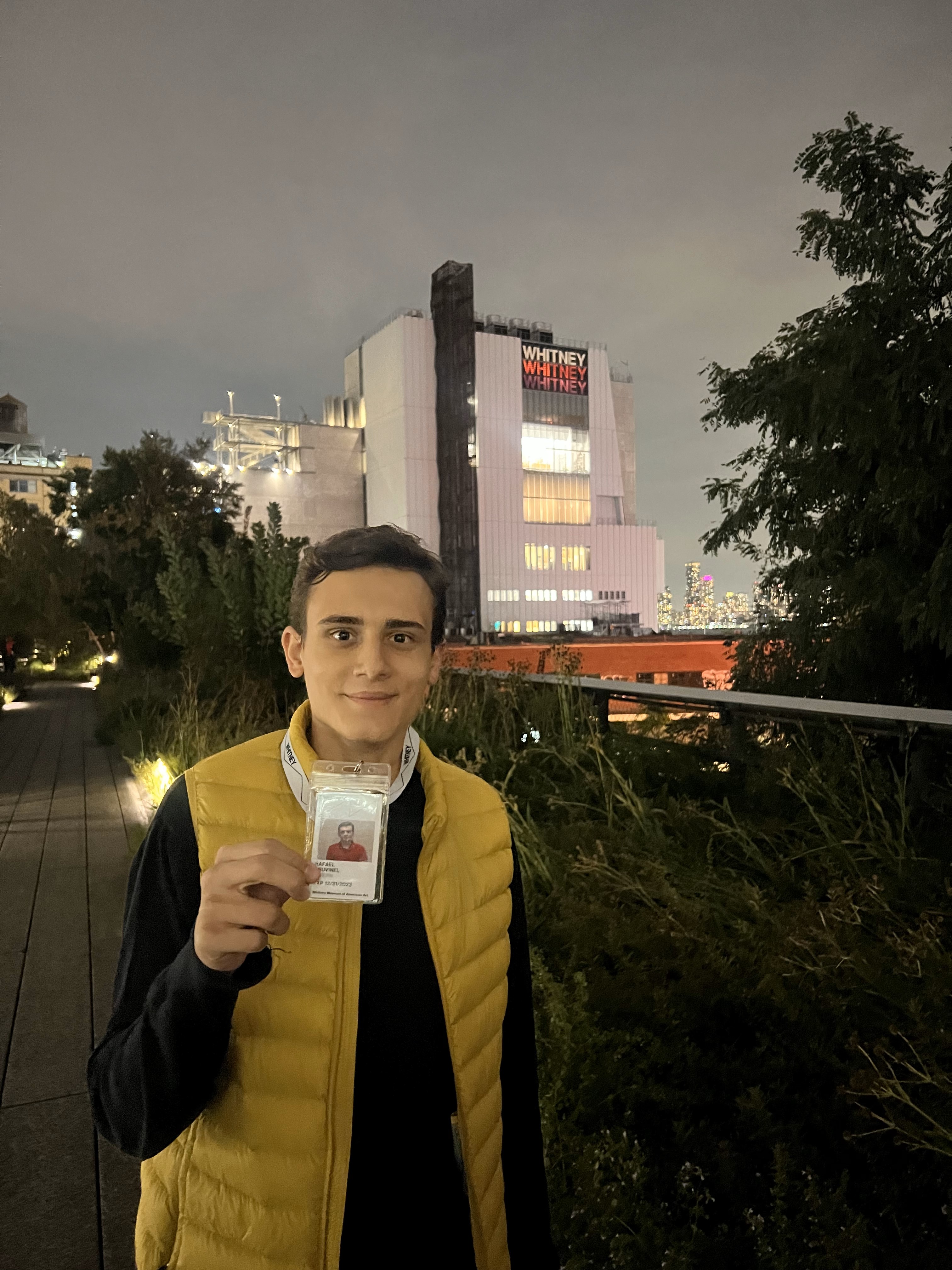Rafael learns about art journalism
Internship Reflection
Fall 2023

By: Rafael Cruvinel
From my very first day at the Whitney Museum of American Art, I was assigned to do tasks that I understood were important. After attending a weekly communications meeting and introducing ourselves to the team, my co-intern and I worked on preparing badges for journalists who would attend the press preview of Ruth Asawa Through Line the following day. We had to put the name tags inside the plastic badges and organize them in alphabetical order, a process we repeated two weeks later for the press preview of Henry Taylor: B Side and Fragments of a Faith Forgotten: The Art of Harry Smith. We also worked in the reception of both press previews, checking journalists in and giving them their badges.
In addition to being at the press previews, I also attended the staff preview for the opening of Henry Taylor’s and Harry Smith’s exhibitions. This was a unique experience, as I had never attended a special event in an art museum before nor had access to an art exhibition before it opened to the general public. I remember being very nervous. This was perhaps the biggest advantage of interning at the Whitney during the fall: it was a busy season. Three major art shows opened, and I had the opportunity to see the arc/life-cycle of these exhibitions in the media.
In the weeks that followed the press previews, many news stories and reviews ran in local and national newspapers. All three shows were selected as critic’s picks in the New York Times, which was a very celebrated feature in our team. My job consisted of collecting highlight quotes from each story and putting them together in a Google doc of “weekly press highlights” that was sent to the rest of the museum. I also had to look through print copies of publications like New York Magazine, The New Yorker, Harper’s Bazaar and Art in America to check if any of the stories ran in print. If I found one, I had to mark it with a sticky note, scan the magazine in the printer and store that scan in a major archive. It’s important to save pdfs from the online and print coverage so that, in the future, the curatorial and administrative departments know which exhibitions attracted most media attention. Part of my job also consisted of editing some of these quotes, so that they could fit in the “news” tab of the museum’s website. For this assignment, my portfolio will be the pdfs of three stories, one about each show.
Another remarkable event that happened while I was interning at the museum was the renovation of the studio where the Whitney hosts its independent study program and the opening of a new restaurant in the lobby, featuring a sculpture by Rashid Johson. The latter presented a challenge for the communications team because The New York Times was supposed to break the story with exclusiveness, but almost didn’t. The newspaper didn’t run the story when it initially planned to because the conflict in the Middle East demanded more attention from staff. However, the sculpture was already out in the street and any person could see it and recognize it as Johson’s work. Eventually, The Times broke it, which came as a relief notice to the team.
It was clear that I got assigned harder tasks as the internship moved forward. The hardest task of them was to help the internal communications team with a data entry project for a new staff site. My responsibility was to move documents from the old staff site to the new staff site. Some of these documents were confidential. For example, Whitney's strategic plan. Moreover, there wasn’t a set procedure for it, as each department has its own organization structure. Figuring all of that out was challenging, but the person who oversaw the project congratulated me at the end and thanked me for the help.
On top of everything, Whitney changed directors while I was at the museum. Adam Weinberg
stepped down and was replaced by Scott Rothkopf. I participated in Weinberg’s last
all staff meeting, where he thanked the museum’s staff for all the years they worked
together.
To conclude, my internship at the Whitney couldn’t have been better in terms of the people I worked with and the season I interned for. I learned a lot about art journalism in New York and contemporary art in the United States. If I had to say anything I wish has been different, it is that I wish I had gotten more feedback. But even that was something that my bosses gave me once I asked them for it. Overall, I’m fulfilled by this experience, and I can say that it motivated me to pursue a career in the arts industry.
